Magnificent Objects: The Artist as Collector
Inside the collections of famed creators, from Damien Hirst to Hiroshi Sugimoto

The latest exhibition at London art gallery and cultural center Barbican takes a deeper look at the fascination with collecting items (be it art, postcards, cookie jars or taxidermied animals) that unites a number of post-war and contemporary artists. Visually striking, the exhibition reads as insight into the minds that have created some of the most remarkable contemporary art. In many cases, seeing their collections results in a deeper understanding of the artists’ own pieces, which are also on display. “Magnificent Objects” was curated by Lydia Yee, a curator at the Barbican who was recently also appointed Chief Curator at Whitechapel Gallery, London.
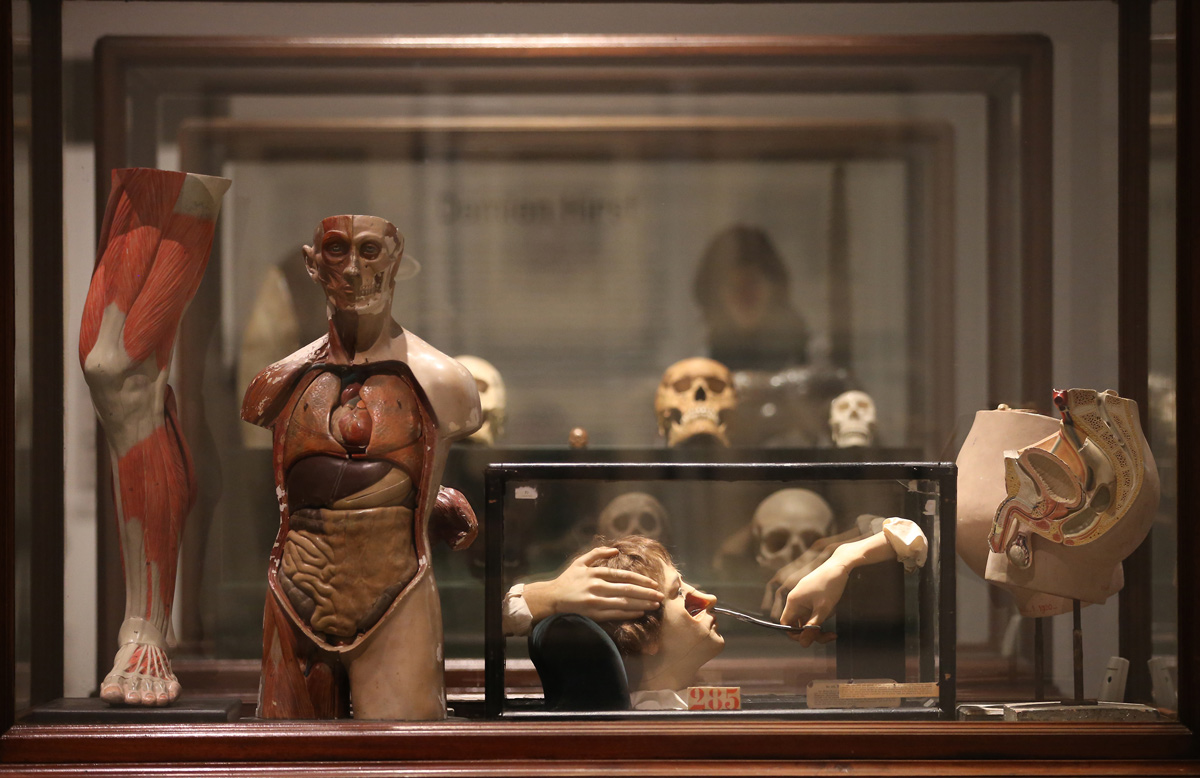
“The exhibition wasn’t inspired by one event, but by a number of things—I was inspired by visiting artists’ studios and seeing the books and things they kept there. And by a Hiroshi Sugimoto exhibition at the Japan Society in New York in 2005, where he showcased Japanese antiques and other collected items among his own pieces. I have also included things from artists’ personal collections in exhibitions before—a Le Corbusier exhibition at the Barbican featured pieces from his personal collections, such as a shell whose shape had inspired him,” Yee says.
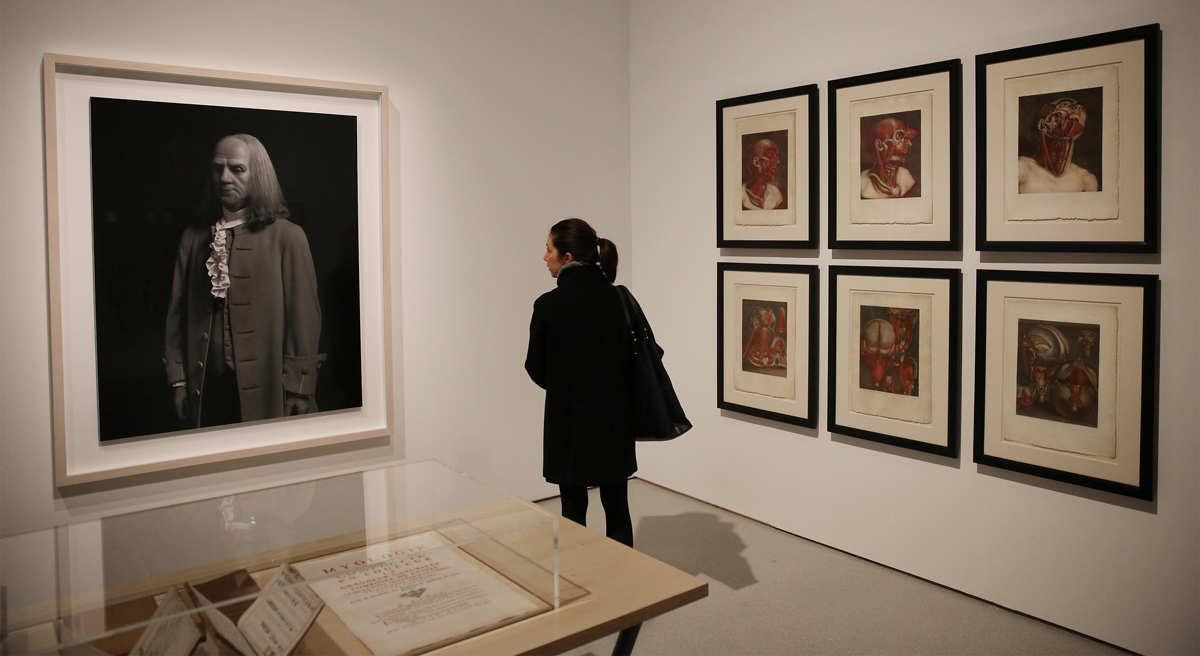
Japanese photographer Sugimoto, whose work was recently seen at Barbican’s Constructing Worlds exhibition returns to the gallery with a collection that includes fossils and optical instruments. The next room is dedicated to Damien Hirst’s collection, which is probably the least surprising of them all; featuring, among other things, a selection of vintage taxidermy species. It is easy to see the parallels between Hirst’s work and his collections; his “Natural History” series of animals in formaldehyde feels like a natural continuation of his collections.
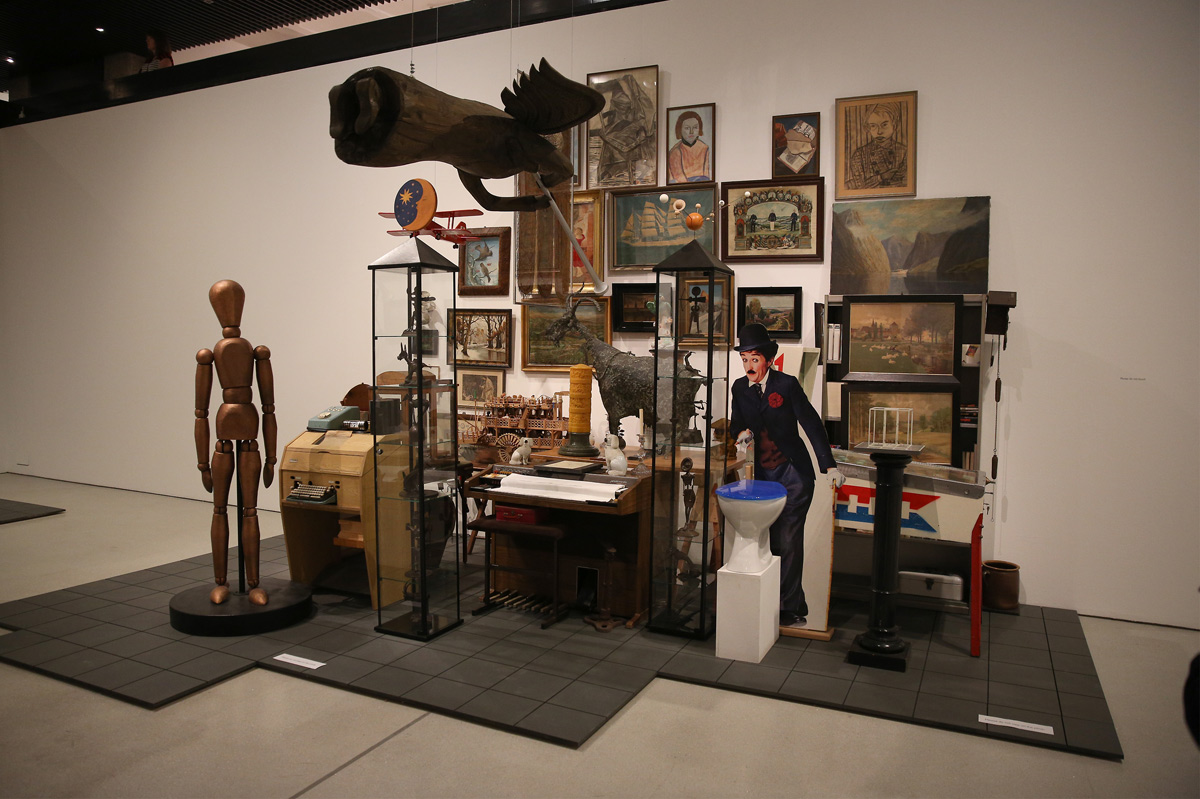
“Magnificent Objects” really comes into its own when the collections make your pre-conceived ideas about the artist get turned upside down. Hanne Darboven’s art is minimalist, ordered and has a scientific feel to it, but her collections are anything but: the partial contents of two of the rooms in her family home in Harburg are shown at the Barbican and reveal a collection of toys, sculptures and the general jetsam and flotsam of life. “Hanne Darboven’s collection was a revelation, as her own work is quite grid-like and seemingly follows a system, but then her home was filled with all these unexpected objects,” Yee comments.
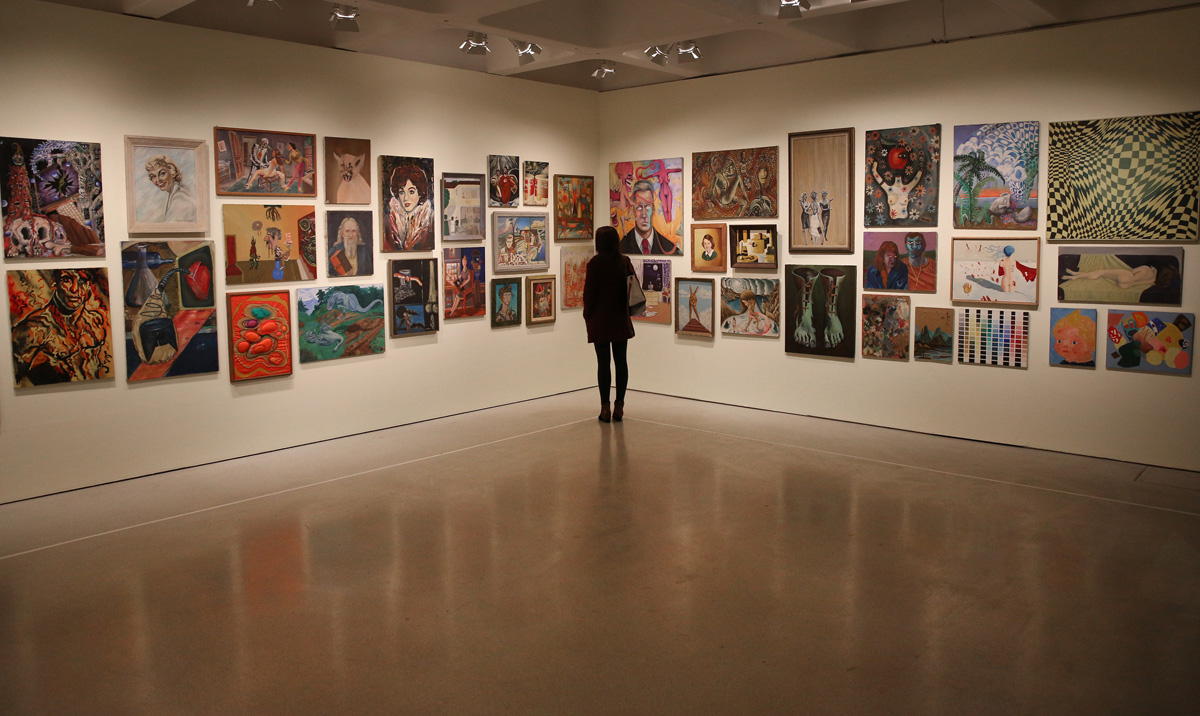
“Magnificent Objects” covers two floors of the Barbican and contains so many amazing things that you can wander around it for hours. Jim Shaw’s “Decapitated Ocapi 1” is shown next to his disturbing, funny collection of thrift store paintings and feels like a direct descendant of the trippy, surrealist artworks. Martin Parr’s collection of old British postcards helps put his artworks, which often deal with themes of tourism and the behavior of the sightseer, into context.
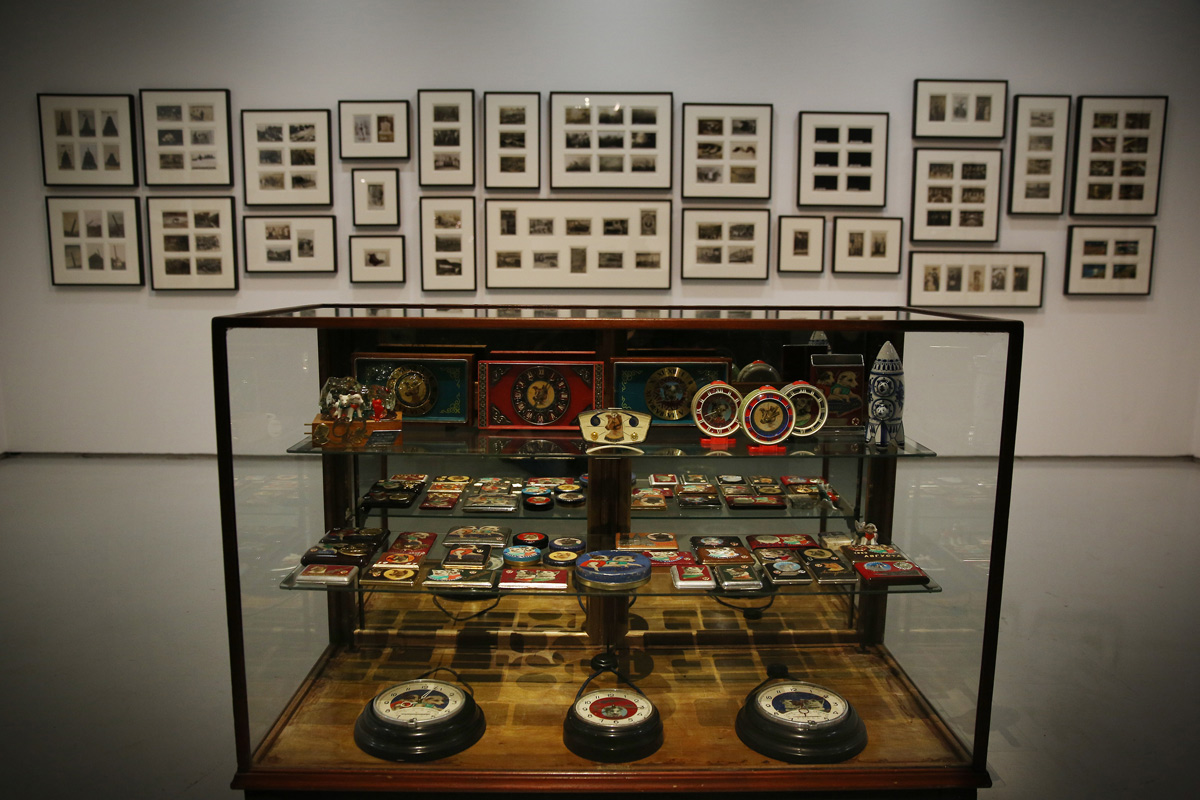
The ultimate impression of “Magnificent Objects” is one of joyfulness, and the curiosity about the world that is surely the mark of any good artist. Yee believes the works the artists create go hand-in-hand with the their collections, saying: “Some collected things prior to becoming artists and have a love of objects that probably influenced their art, while others—especially those who collect expensive and rare items—could only begin collecting properly when they had become better known and were no longer starving artists.”
“Magnificent Objects: The Artist as Collector” is on until 25 May 2015.
Images courtesy of Peter MacDiarmid, Getty Images.












